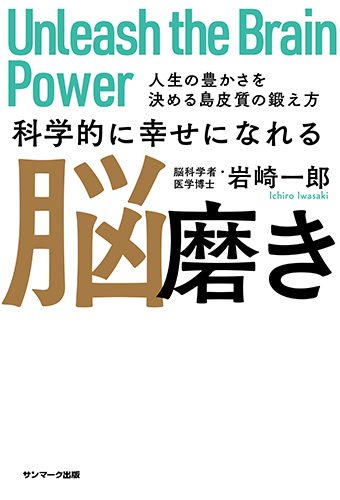


ISBN978-4-7631-3842-2 C0030
367 pages / October 2020 / 1,600 yen (w/o tax)
Leading neuroscience research uncovers “the science of happiness.”
Unleash expected powers of the brain.
Explained in these pages are ways to hardwire the brain through deliberate stimulation. Leading research shows that the insular cortex can be disciplined, balancing the overall function of the brain, and enhancing one’s positive psychology.
In other words, “hardwiring” refers to training the insular cortex by stimulating the brain in certain ways, creating a happy brain.
Hardwiring happiness consists of six processes:
◎Being thankful
◎Thinking positively
◎Being with like-minded friends and family
◎Practicing altruism
◎Practicing mindfulness
◎Getting awe-inspired
These steps sound easy enough but are all supported by 255 theses, including evidence from the latest research.
Author Iwasaki is a neurologist with over 25 years of experience taking part in cutting-edge research at US institutions including Northwestern University Department of Neurobiology neuroscience research labs.
Iwasaki also struggled with personal happiness for many years, but his work as a neurologist lead him to discover ways to improve his own life as well as the lives of those around him just by using his brain differently. This book is the result of his many writings and extensive research of numerous case studies.
Hardwiring happiness into your life is as easy as any other health and fitness routine.
◎ Hardwiring is verified by science
◎ Goal setting approaches that boost happiness, or reduce it
◎ Good or bad events happening in sequence can be explained in terms of brain function
◎ Training the insular cortex is how homo sapiens have survived
◎ Thomas Edison taught us to keep our eyes on the road ahead
◎ The happiness of giving to others is long-lasting
◎ Mindfulness for higher test scores
◎ Are you easily awe-inspired?
◎ Hardwiring helps you predict the future
 I have always been interesting in neuroscience as a tool for personal achievement and growth. After reading some of Iwasaki’s writings several years ago, I reached out to him, but nothing came to fruition. Then I was able to meet him in person at a publishing seminar last year, and the rest is now history.
I have always been interesting in neuroscience as a tool for personal achievement and growth. After reading some of Iwasaki’s writings several years ago, I reached out to him, but nothing came to fruition. Then I was able to meet him in person at a publishing seminar last year, and the rest is now history.
We had several meetings—or shall I call them neurology lectures—before writing began, and I can say that the persuasive, evidence-backed information he shared was explained in both exciting and clear terms. It is now all here in this book for you to take in.
